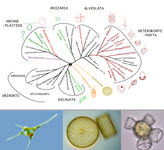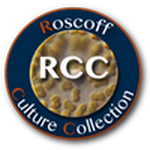Projects

PhenoMap (2020-2023)
Characterize unknown phytoplankton species

RCC
Roscoff Culture Collection
After attending the Ecole Polytechnique in Paris, the Ecole Nationale du Génie Rural and working as an engineer for a few years, I completed a PhD on the cell cycle regulation of phytoplankton under the guidance of Penny Chisholm at MIT, Cambridge, US. From 1985 to 2019, I have been a researcher at CNRS, working at the Station Biologique of Roscoff (France). I developed initially applications of flow cytometry to measure picoplankton abundance in the Ocean. Around 1995, I began to focus on the diversity and ecology of eukaryotic picophytoplankton developing molecular approaches such as gene cloning, metabarcoding and metagenomics. Currently my interests revolve around green algae, bolidophytes and haptophytes involved in symbioses with cyanobacteria. I have also a keen interest in processing and analysis of large metabarcoding datasets, using in particular the R language. I created in 1998 the Roscoff Culture Collection, which is now the biggest collection in the world for marine phytoplankton. I am also maintaining the PR2 databases, a large repository of curated eukaryotic 18S rRNA sequences and metabarcodes.
I have served as an editor for the Journal of Phycology, Aquatic Environmental Microbiology, Scientific Reports and more recently as a senior editor of the ISME Journal.
I am an Emeritus Senior Scientist at CNRS affiliated with the UMR 7144, ECOMAP team at the Station Biologique of Roscoff]. From 2018 to 2022 a Visiting Professor at the Asian School of the Environment, Nanyang Technological University, Singapore where I worked within the GEEK Lab. Since August 2023, I am a guest researcher at the University of Oslo in Norway in the Department of Biosciences, AQUA division.
Download CVIngénieur, 1975
Ecole Polytechnique
Ingénieur, 1977
Ecole du Génie Rural et des Eaux et Forêts
PhD in Oceanography, 1985
Massachusetts Institute of Technology

Characterize unknown phytoplankton species

Roscoff Culture Collection